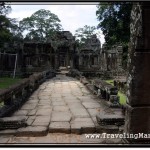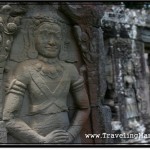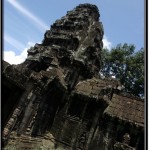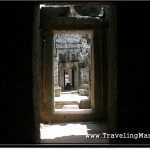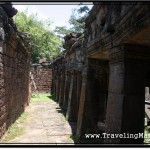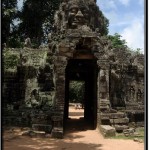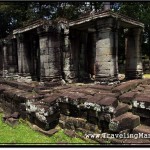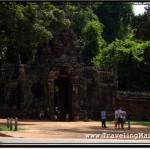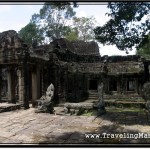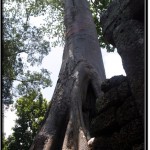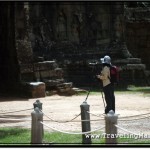The mystery surrounding Banteay Kdei temple is intriguing. Because a marker stele that would contain information about who built the temple and why has never been found, all we can do is guess. What we do know is that Banteay Kdei was constructed over a site of a smaller temple and served as a monastery for the monks during the reign of Jayavarman VII. His successor, king Jayavarman VIII vandalized Buddha images installed within during Jayavarman VII in an attempt to promote Hinduism. The photo gallery below contains pictures of Banteay Kdei I took in September 2009.
Tag: Hinduism
Angkor Wat
There is no denying it – Angkor Wat is the most breathtaking temple complex at the Angkor Archaeological Park. It is also the best preserved monument at Angkor because unlike all other temples, Angkor Wat was never abandoned. Compared in its grandeur to architectonic gems of ancient Greece or Rome, Angkor Wat is still the largest religious structure in the world.
Angkor Wat was built in the early 12th century for then King Suryavarman II (ruled Cambodia between 1112 and 1152). It was initially constructed in honor of the Hindu god Vishnu with whom the god-king Suryavarman II identified, but was restored to become a shrine for Buddhist pilgrims in the 16th century. From that point on, Angkor Wat has been the only temple at Angkor that was continuously used which significantly contributed to its well preserved state.
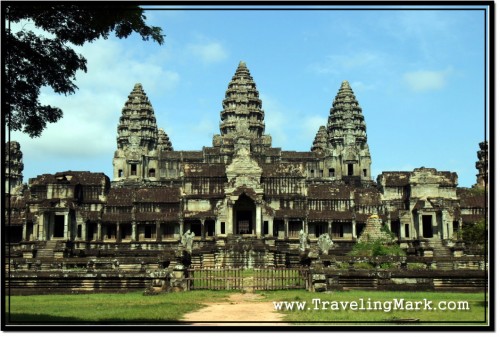
After flourishing Khmer civilization mysteriously vanished and abandoned the monumental city, Angkor was overtaken by jungle and started to fall into ruin. Phnom Penh has become the capital city and the center for the Khmer Royal court and Angkor continued to deteriorate until it was rediscovered by French explorers in the 1860’s.
Portuguese monk Antonio da Magdalena visited Angkor Wat in 1586 and became the first westerner to make a written account about it. However, even though completely astounded by its splendour and having made a colourful report describing Angkor’s magnificence, his story was not published until 1958. It wasn’t until 1868 when French explorer Henri Mouhot published his account in Voyage a Siam et dans le Cambodge that Angkor Wat got widely popularized in the western countries.
Architectonically, Angkor Wat represents the epitome of Khmer architecture. It is widely accepted as a symbol of Cambodia and has been on country’s national flag since about 1863, when Cambodia’s first flag was introduced. Angkor Wat is also the most recognizable landmark of the country and is responsible for attracting more foreign tourism to Cambodia than anything else.

The reason why Angkor Wat faces west is still left for speculations. Temples are by default built facing east and because west represents death, many experts speculate that Angkor Wat was not built to be a temple, but rather a tomb for Suryavarman II – the god-king who had it built. Strangely enough, the remains of Suryavarman II were never laid in Angkor Wat. So why was it built facing west???
Despite its west facing orientation, Angkor Wat does bear signs of being a temple. One of prime reasons to assume that it was a temple is the design which represents Mount Meru – a holy mountain in the center of the universe which has long been regarded to be the home to Hindu gods (Shiva). This is where the term “temple-mountain” comes from. Banteay Samre, Beng Melea, Wat Atwea and Thommanon are other Angkorian-era temple-mountains built in the same style as Angkor Wat and may have served as prototypes for the design of their most famous cousin. Moat surrounding the temple represents the oceans surrounding Mount Meru. Aside from being a Temple Mountain, Angkor Wat also encompasses the layout style known as “Galleried Temple” and serves as an architectural combination of the two.
The heart of Angkor Wat consists of a three tiered temple with five distinctive towers. Four of these lotus-shaped towers crown each of the corners of the temple while the fifth one is in the middle and reaches above all others. Center tower rises up no less than 65 meters from ground level.
The walls of this 1 square kilometre temple are covered on both sides with carvings and bas reliefs. The exterior of temple’s lower level wall is covered with bas reliefs depicting complete stories from Hindu mythology, including Churning of the Ocean Milk on the east wall, and successful war lead by Suryavarman II against Chum (Battle of Kurukshetra) on the west wall. Nearly 2,000 carvings of Apsaras (or Devatas) can be found at various places throughout Angkor Wat. Apsaras were celestial dancers who were widely regarded as messengers between the gods and humans.
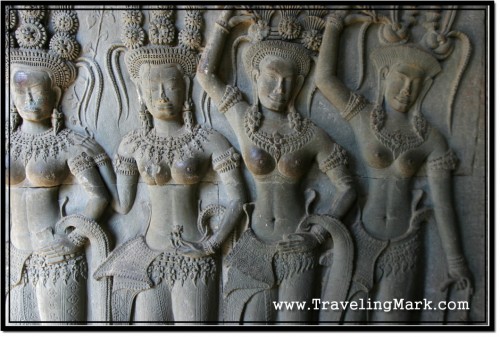
Including the moat, Angkor Wat spreads over a chunk of land that’s 1.3 kilometers wide and 1.5 kilometers long. Exterior wall that wraps around the temple measures 1025 meters by 800 meters. The moat that surrounds the exterior wall from the outside is 190 meters wide and filled with water, making any moat around medieval castles look like a puddle after rain.
According to preserved inscriptions, 300,000 workers and 6,000 elephants were involved in the construction of Angkor Wat. However even though not fully completed, the construction works stopped shortly after king Suryavarman II’s death leaving some of the bas reliefs unfinished. Scholars speculate that Angkor Wat’s original name may have been Vrah Vishnulok – based on the name of the deity it was dedicated to but none of the inscriptions found has any reliable reference to the original name so this remains a speculation.
Hope you have enjoyed my little introduction to Angkor Wat – the acme of the Angkor World Heritage Site. It contained brief history, information about its architecture, overview of its king and the empire, art, size, symbolism and other useful facts. Few pictures accompany the article, for more pictures visit any of my extensive galleries:
